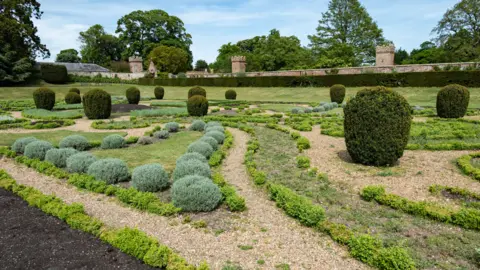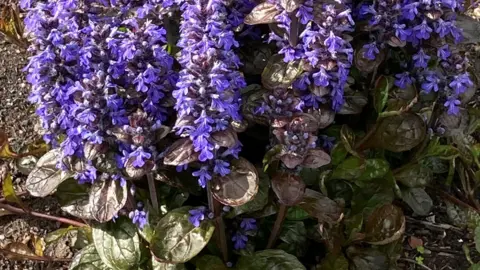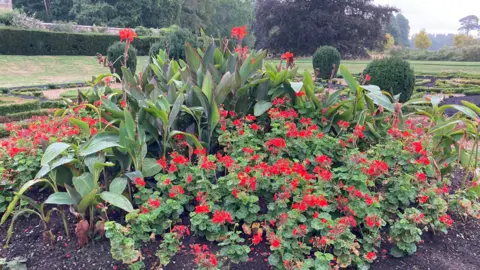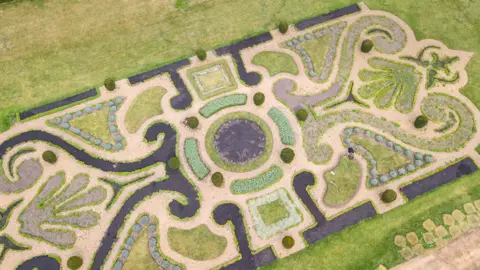Oxburgh Hall's Victorian garden adapted for climate change
 National Trust/Paul Harris
National Trust/Paul HarrisA 19th Century garden belonging to a Grade I-listed 15th Century manor house is to be adapted to help it cope with the effects of climate change.
Changes to the Parterre Garden at Oxburgh Estate, Norfolk, include removing the box hedging.
Senior gardener Dea Fischer said its replacement needed to tolerate "dry, exposed conditions".
The National Trust said the estate had just experienced its longest period of drought ever recorded.
 National Trust/Paul Harris
National Trust/Paul Harris Dea Fischer
Dea FischerThe parterre was created in 1848 and needs a major refresh every 30 to 40 years.
It was last fully refurbished in 1972.
Its box hedging is under threat from a fungus known to gardeners as "box blight" and will be replaced by Euonymus japonicus microphyllus.
Ms Fischer said this followed a two-year hedging trial at Oxburgh, which tested three alternative species.
The Euonymus "tolerates the light, sandy soil, as well as dry, exposed conditions here", she said.
 Dea Fischer
Dea FischerThe National Trust's Plant Conservation Centre will propagate 6,000 new plants and they will start arriving in spring 2024.
The team also plans to replace the parterre's 7,000 annual plants with perennials to provide a year-round display.
Ms Fischer said she had chosen plants to reflect "the heraldry colour palette of the Bedingfeld family who have called Oxburgh home for more than 500 years".
But its central medallion will planted with the traditional red Canna indica lilies and Pelargonium Paul Crampel, which the hall's records show has been propagated at Oxburgh since Victorian times.
The National Trust said climate change was having "a serious impact" on the estate and its longest period of recorded drought was from summer 2022 to May.
 National Trust/Paul Harris
National Trust/Paul Harris
Follow East of England news on Facebook, Instagram and Twitter. Got a story? Email [email protected] or WhatsApp us on 0800 169 1830
